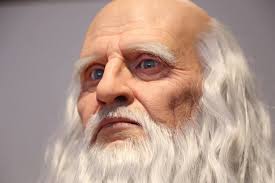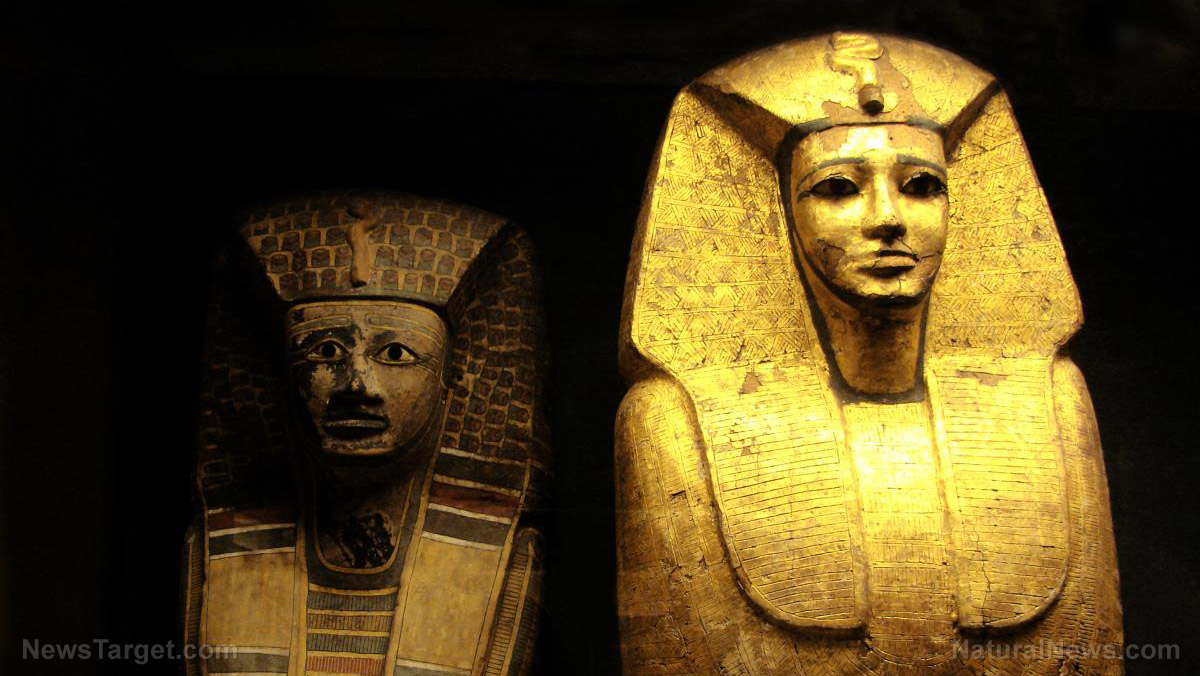Da Vinci’s sketches suggest his understanding of gravity was CENTURIES ahead of his time
02/20/2023 / By Kevin Hughes

The sketches of Italian genius Leonardo da Vinci suggest that his understanding of gravity was centuries ahead of his time.
Da Vinci’s sketches, which have been neglected for decades, reveal triangles made by sand-like particles pouring from a jar. The falling grains depicted experiments to show that gravity was a form of acceleration, more than 400 years before German-born physicist Albert Einstein did the same. (Related: Flat Earthers strike out again by failing to grasp the phenomenon of gravity, elliptical orbits and acceleration.)
A new study led by a California Institute of Technology (Caltech) professor has examined diagrams in da Vinci’s notebooks. These notebooks, which have now been digitized, show da Vinci’s experiments from the early 1500s.
“It wasn’t until 1604 that Galileo Galilei would theorize that the distance covered by a falling object was proportional to the square of time elapsed; and not until the late 17th century that Sir Isaac Newton would expand on that to develop a law of universal gravitation, describing how objects are attracted to one another. Da Vinci’s primary hurdle was being limited by the tools at his disposal. For example, he lacked a means of precisely measuring time as objects fell,” said study lead author Mory Gharib, a professor of aeronautics and medical engineering at Caltech.
Einstein initially formulated in 1907 the idea called the “equivalence principle,” which stated that the experience of being accelerated by gravity and being accelerated relative to a fixed frame of reference are indistinguishable.
To do that, Einstein expanded upon ideas from Newton’s 1687 finding of the universal law of gravitational attraction and Galileo’s 1604 statement about the law of freefall.
“We don’t know if da Vinci did further experiments or probed this question more deeply. But the fact that he was grappling with this problem in this way — in the early 1500s — demonstrates just how far ahead his thinking was,” said Gharib.
Da Vinci’s secret notebooks filled with fantastic inventions and anatomical observations
Da Vinci was a brilliant painter, architect, inventor, anatomist, engineer and scientist. Mainly self-educated, he packed dozens of secret notebooks with fantastic inventions and anatomical observations. In addition to detailed drawings of human anatomy, his notebooks include designs for bicycles, helicopters, tanks and airplanes. Of the more than 13,000 pages of these sketches that were later compiled into codices, less than a third had survived.
Gharib examined the digitized copies of these notebooks to discuss da Vinci’s studies of flow dynamics with his students when he saw the sketches in the pages of the Codex Arundel, a notebook which dates back to between 1480 and 1518. There he observed the triangles formed by particles pouring from moving jars, which were accompanied by an intriguing phrase written in da Vinci’s mirrored handwriting.
“What caught my eye was when he wrote ‘Equatione di Moti’ [translated by the researchers as ‘equivalence of motions’] on the hypotenuse of one of his sketched triangles — the one that was an isosceles right triangle. I became interested to see what Leonardo meant by that phrase,” Gharib said.
Gharib and his colleagues found that da Vinci was describing water or sand being dumped from a pitcher as it moved along a straight path parallel to the ground.
Da Vinci’s notes revealed that he knew the particles would accelerate downwards, and that once they had left the pitcher, this acceleration was only brought about by gravity. Da Vinci reasoned that if the pitcher moved at a constant rate, the line traced out by the falling particles would be vertical, but if it accelerated at a constant rate, then the particles make a straight but slanted line that forms the hypotenuse side of a triangle.
The Italian genius noticed that if the jug accelerates to release the drips at the same rate that gravity accelerates them toward the ground, an equilateral triangle is traced out – the first hint of the equivalence principle at play.
Da Vinci attempted to formulate his observations into an equation but dumped the attempt. By operating a simulation of his experiment, the researchers discovered where he went astray.
“What we saw is that Leonardo wrestled with this, but he modeled it as the falling object’s distance [from the object’s dropping point] was proportional to 2 to the t power [with t representing time] instead proportional to t squared. It’s wrong, but we later found out that he used this sort of wrong equation in the correct way,” said co-author Chris Roh, a professor of biological and environmental engineering at Cornell University.
The study was published November 28 last year in the journal Leonardo.
Follow Discoveries.news for more news about the latest scientific and archeological findings.
Watch the video below about Sir Isaac Newton’s quote on gravity.
This video is from the Anti-Disinformation channel on Brighteon.com.
More related articles:
Scientists suggest “gravity portals” can turn dark matter into ordinary matter.
Sources include:
Submit a correction >>
Tagged Under:
Albert Einstein, artifacts, breakthrough, Codex Arundel, discoveries, equivalence principle, Galileo Galilei, Gravity, law of freefall, Leonardo da Vinci, Mory Gharib, real history, research, Sir Isaac Newton, sketchbooks
This article may contain statements that reflect the opinion of the author
RECENT NEWS & ARTICLES
COPYRIGHT © 2017 DISCOVERIES NEWS



















